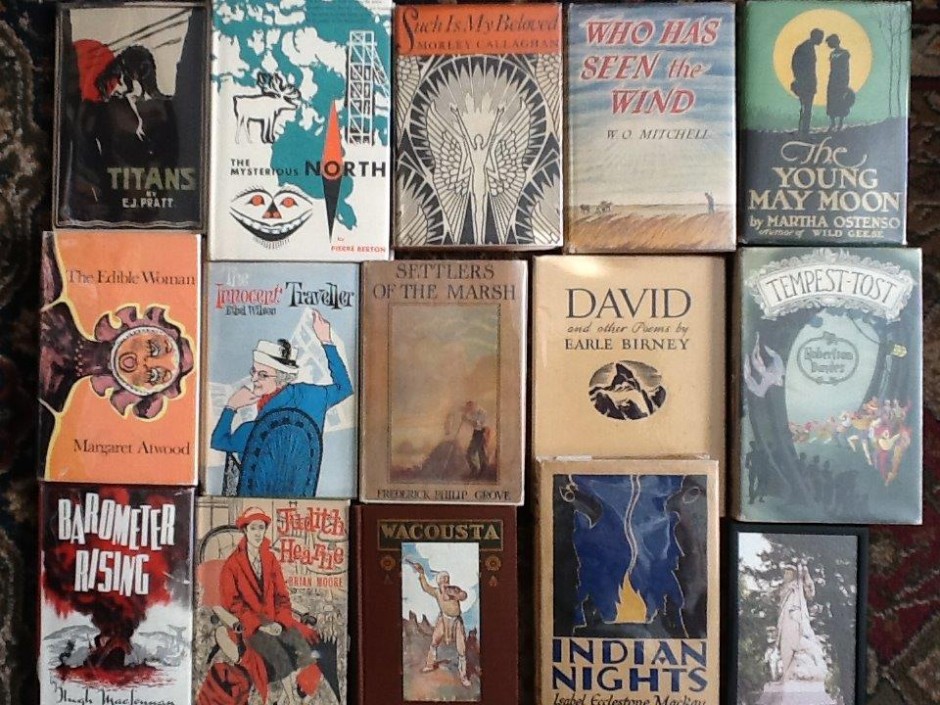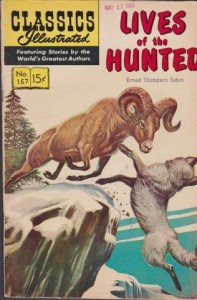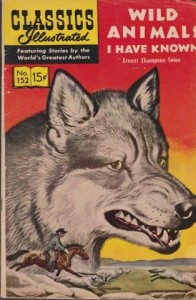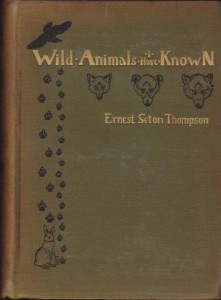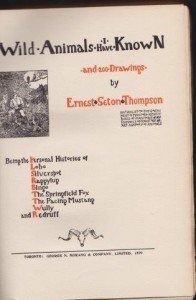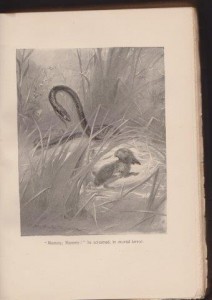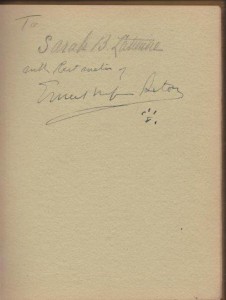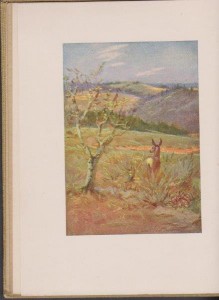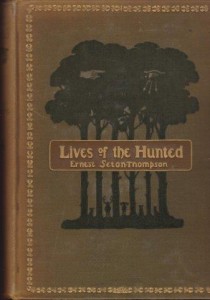(above: left to right, top to bottom–the only Classics Illustrateds featuring a Canadian writer–covers both by Leonard B. Cole, September 1959 & July 1960; Wild Animals I Have Known, Morang–1898 (3rd impression), title page, Seton illustration of young Raggylug attacked by a snake–caption: “Mammy, Mammy!” he screamed, in mortal terror.”; inscription with trademark pawprint by Seton in Scribner’s 1900 edition (3rd impression) of The Trail of the Sandhill Stag, in same–frontispiece illustration by Seton; cover of Lives of the Hunted –Scribner’s 1901–1st ed.)
N.B., Ernest Seton-Thompson (name he used in his early books) officially changed his name to Ernest Thompson Seton in 1901. English-born Seton (1860-1946) was Canada’s first significant naturalist and woodlorist. His initial 1892-1896 naturalist work was done for the Government of Manitoba in the Carberry area, something reflected in all three books mentioned above.
Before these aforementioned titles, he wrote an 1891 book on Manitoba birds, following this book up with books on Manitoba mammals in 1909 and 1925-1928. He was chief of the Boy Scouts from 1910-1915, and eventually relocated in New Mexico. As shown above, Seton capably and profusely illustrated his own books with sketches, drawings, and paintings. In 1894, during his last wolf hunt, he had an epiphany about the cruelty of hunting animals and began a long process to becoming a renowned conservationist and environmentalist. This major turning point in his life is captured memorably in The Trail of the Sandhill Stag.
Seton’s work and the animal stories of Charles G.D. Roberts and Farley Mowat reflect a long historical Canadian interest in Nature and wildlife. His interesting, eventful life has been visually well-documented In the recent Ernest Thompson Seton: The Life and Legacy of an Artist and Conservationist by David L. Witt, Gibbs Smith, 2010. This is definitely the go-to book for more info on Seton.
